Abstract
1. The inhalation of CO2 produces a tachypnoea only in the presence of intact vagus nerves; the present study was designed to examine the mechanism of this phenomenon in the dog.
2. Closed-chest cardiopulmonary bypass was established in dogs weighing 16-24 kg, anaesthetized with chloralose. When the `bypass' was established pulmonary blood flow ceased, PA, CO2 was reduced and the respiratory rate slowed. 3-10% CO2 in O2 could then be inhaled without change in the level of Pa, CO2 set at the oxygenator.
3. The addition of CO2 in these concentrations to the inspired oxygen resulted in an increase in respiratory frequency, maximal at the first breath and sustained for the 1 min period of exposure. The increase in respiratory frequency was due to a shortening of expiratory duration. Inspiratory duration did not change. The response was absent after vagotomy.
4. Inert gases in O2, given as a control, had no effect on breathing.
5. The effect of raising Pa, CO2 (by increasing the concentration of CO2 in the gas equilibrating the blood in the oxygenator), was primarily to increase tidal volume.
6. The ventilatory effect of inspiring CO2/O2 mixtures was shown to be additive to the effect of raising Pa, CO2.
7. These experiments show that an afferent vagal reflex originating from the lungs causes tachypnoea, when a dog, on `bypass', inhales low concentrations of CO2 in O2.
Full text
PDF
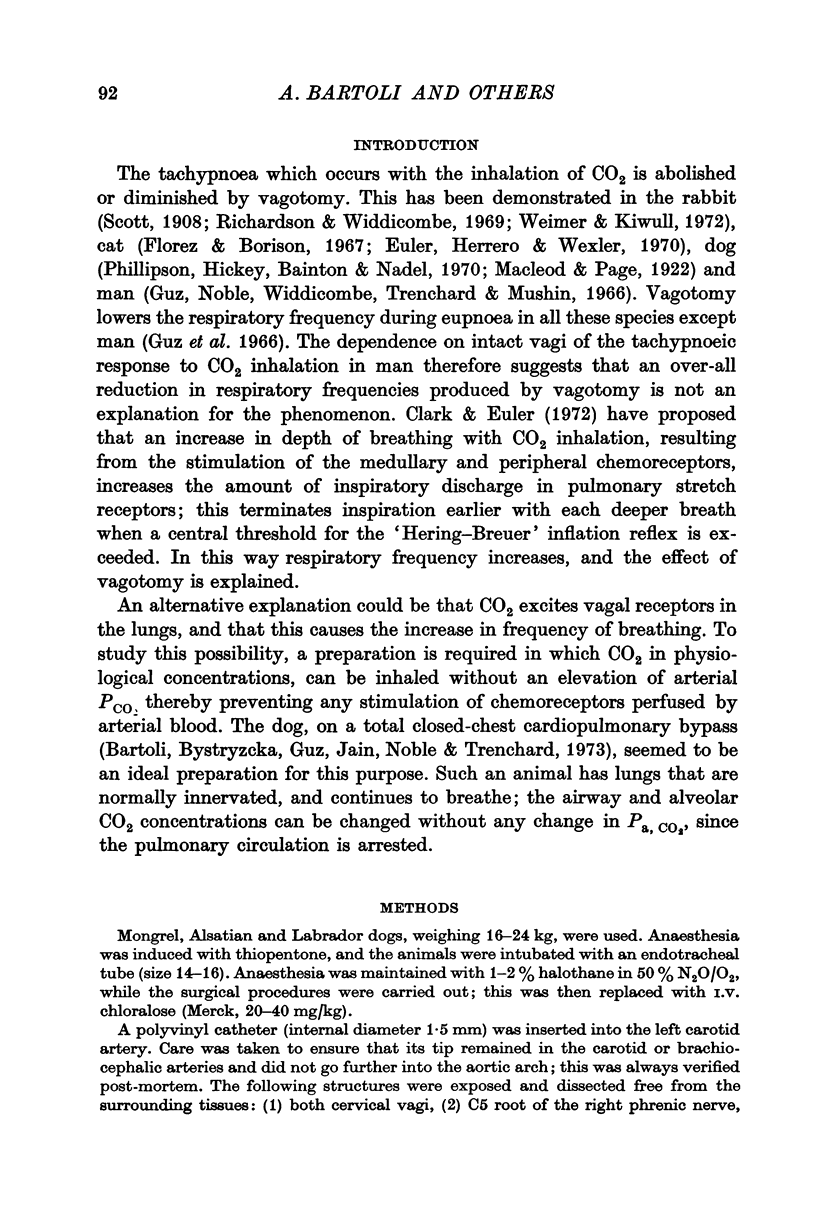



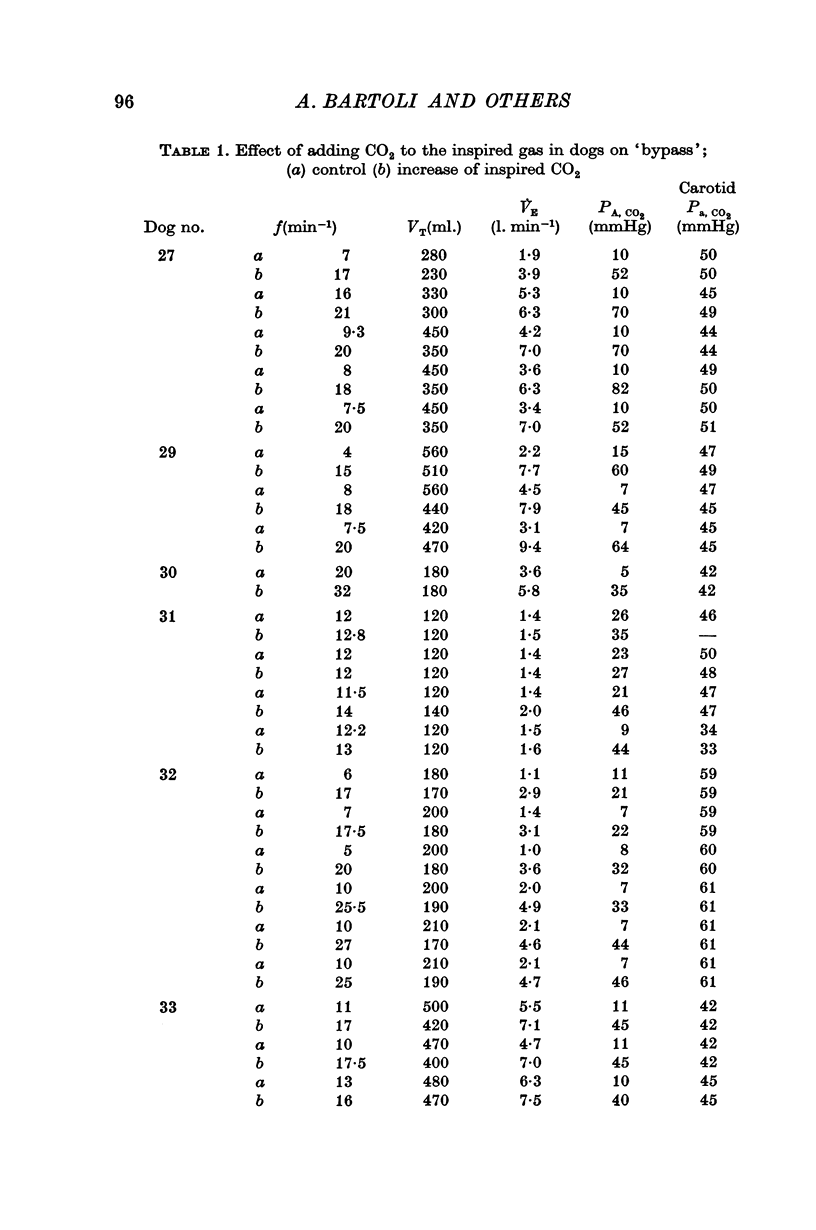
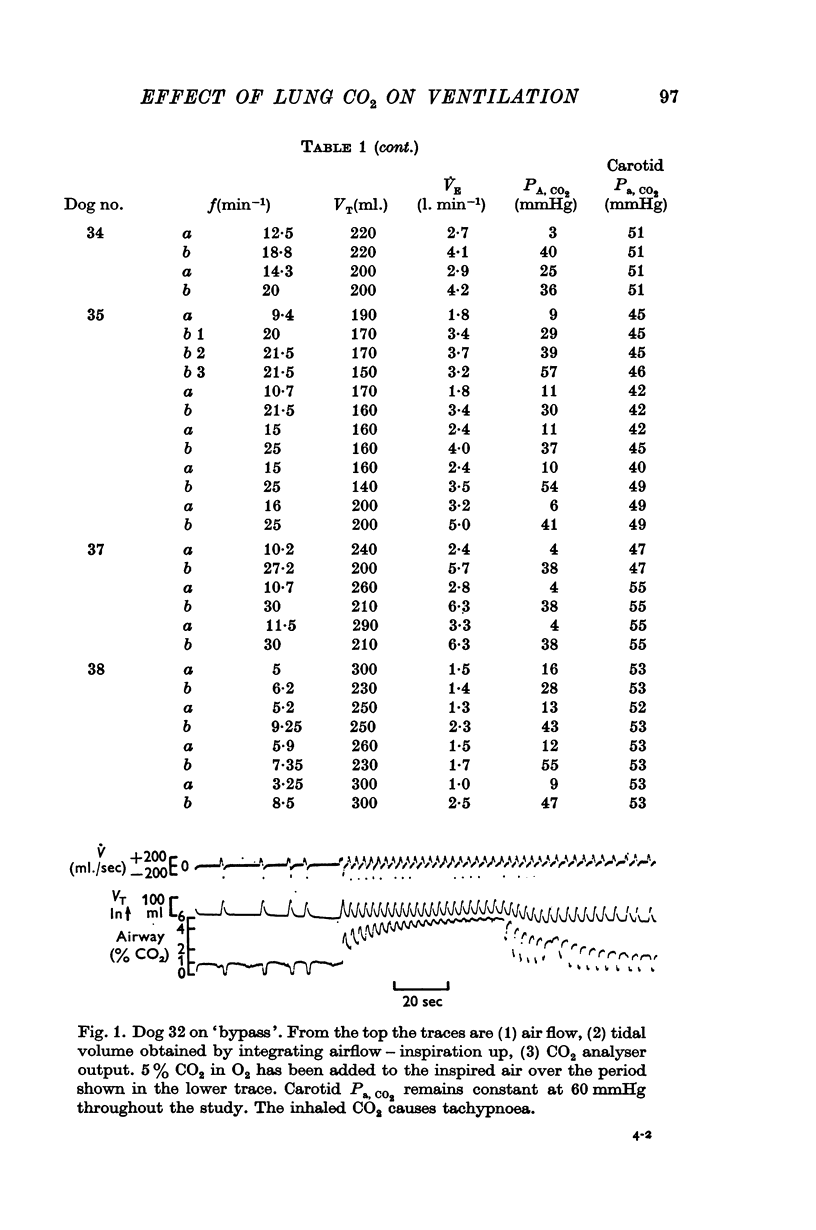


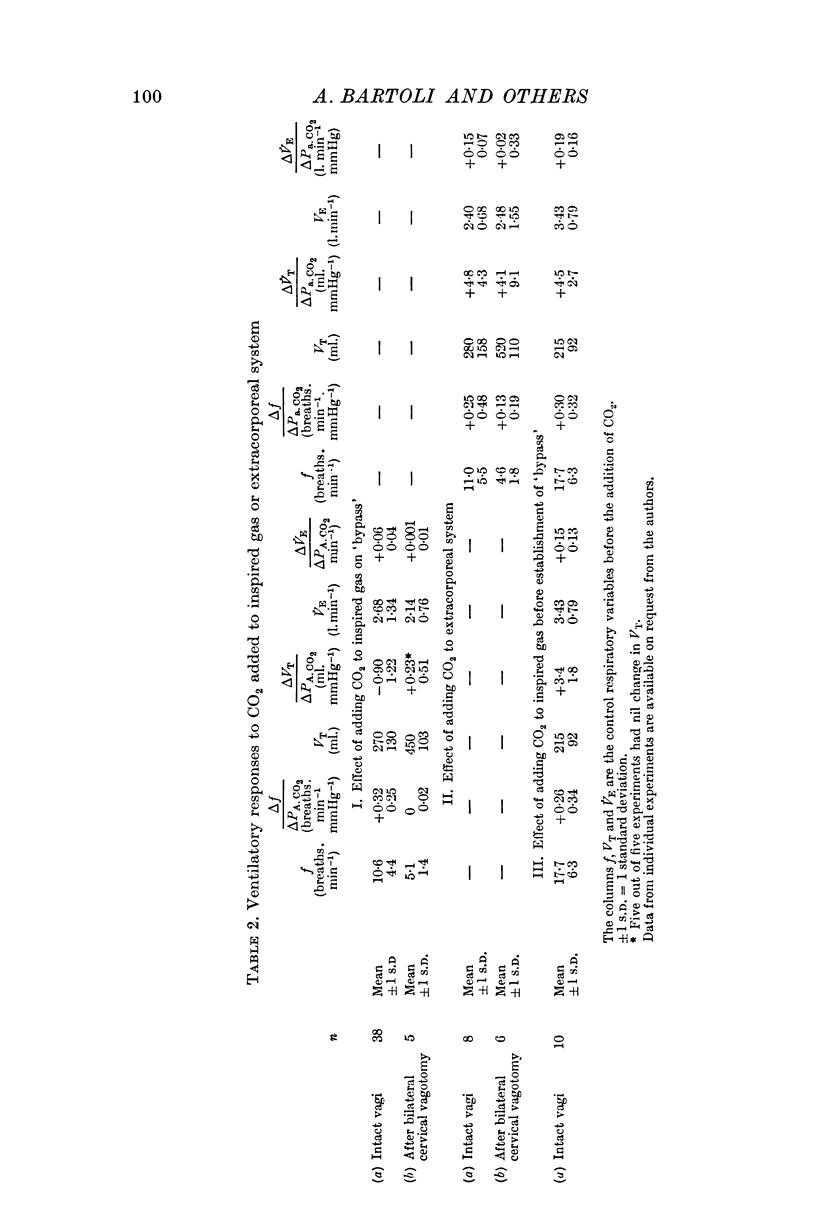

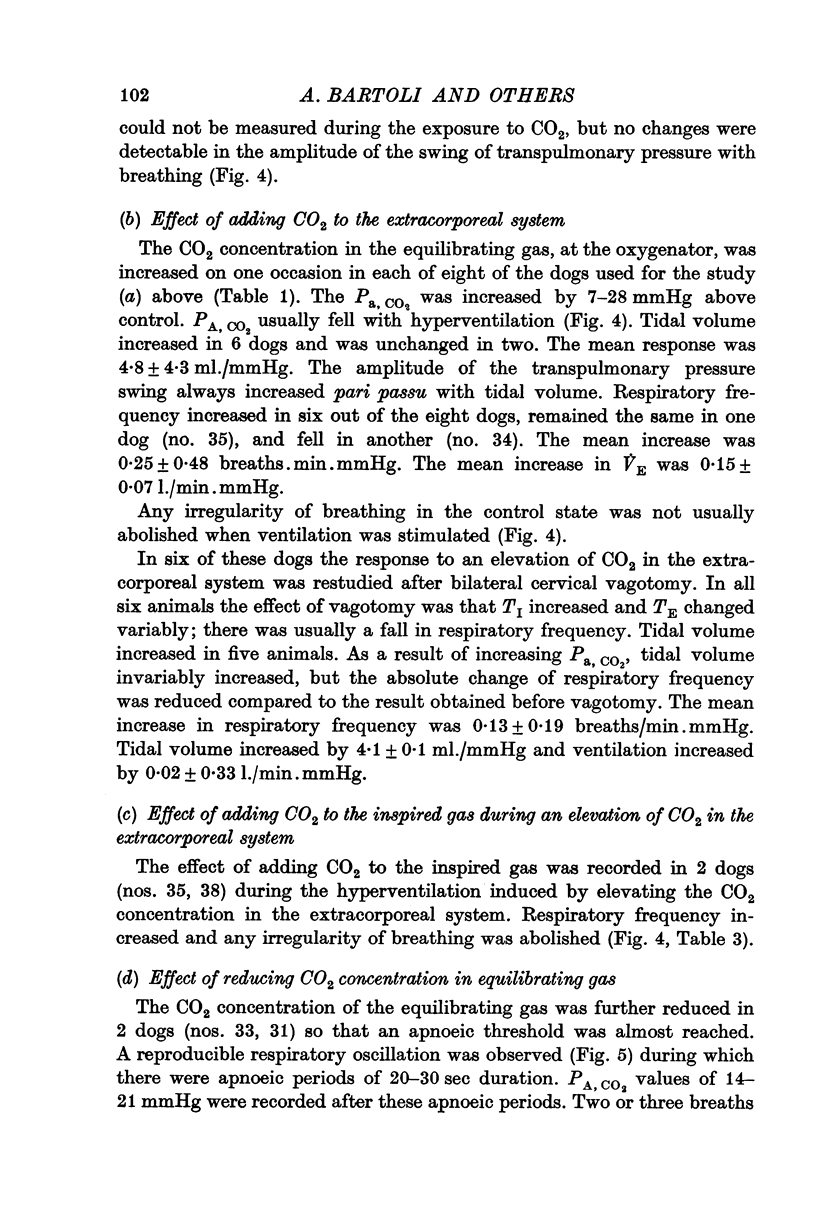
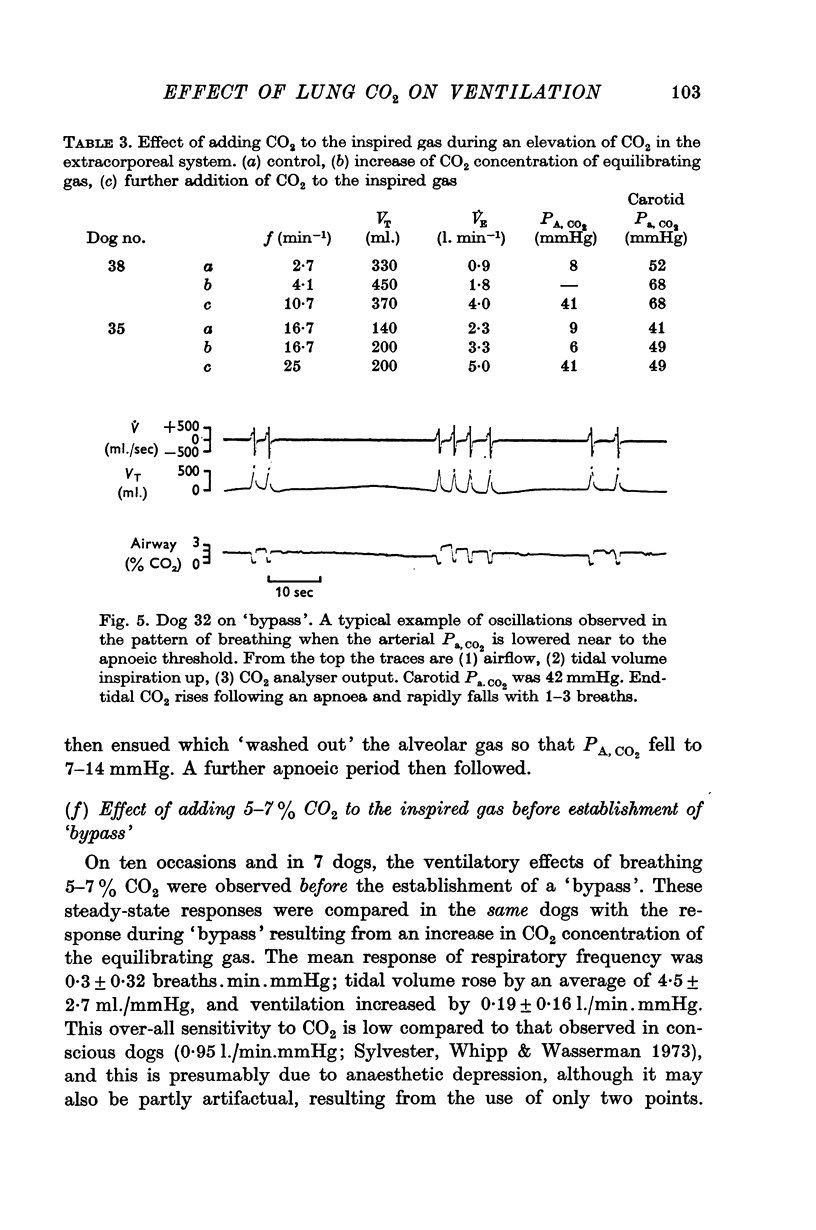



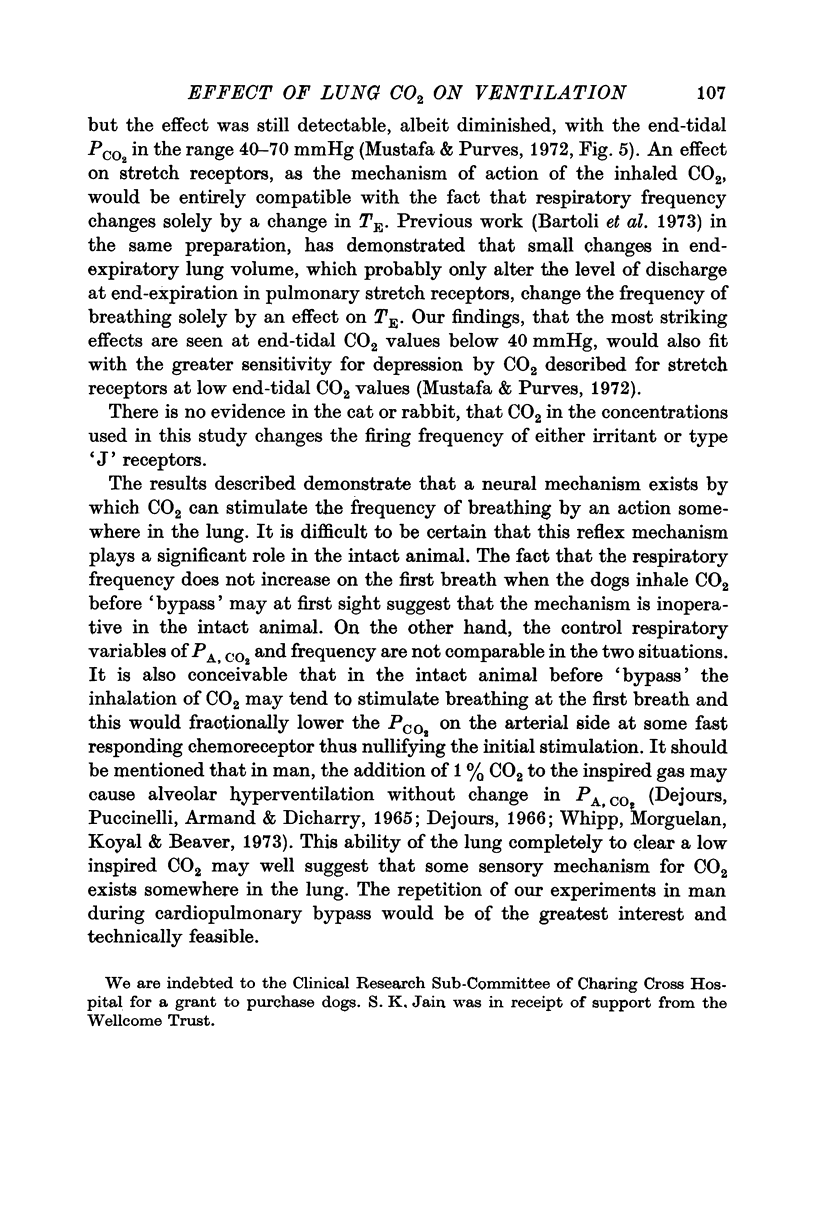


Selected References
These references are in PubMed. This may not be the complete list of references from this article.
- Adrian E. D. Afferent impulses in the vagus and their effect on respiration. J Physiol. 1933 Oct 6;79(3):332–358. doi: 10.1113/jphysiol.1933.sp003053. [DOI] [PMC free article] [PubMed] [Google Scholar]
- Bartoli A., Bystrzycka E., Guz A., Jain S. K., Noble M. I., Trenchard D. Studies of the pulmonary vagal control of central respiratory rhythm in the absence of breathing movements. J Physiol. 1973 Apr;230(2):449–465. doi: 10.1113/jphysiol.1973.sp010197. [DOI] [PMC free article] [PubMed] [Google Scholar]
- CROSFILL M. L., WIDDICOMBE J. G. Physical characteristics of the chest and lungs and the work of breathing in different mammalian species. J Physiol. 1961 Sep;158:1–14. doi: 10.1113/jphysiol.1961.sp006750. [DOI] [PMC free article] [PubMed] [Google Scholar]
- Clark F. J., von Euler C. On the regulation of depth and rate of breathing. J Physiol. 1972 Apr;222(2):267–295. doi: 10.1113/jphysiol.1972.sp009797. [DOI] [PMC free article] [PubMed] [Google Scholar]
- Dejours P., Puccinelli R., Armand J., Dicharry M. Concept and measurement of ventilatory sensitivity to carbon dioxide. J Appl Physiol. 1965 Sep;20(5):890–897. doi: 10.1152/jappl.1965.20.5.890. [DOI] [PubMed] [Google Scholar]
- Fedde M. R., Peterson D. F. Intrapulmonary receptor response to changes in airway-gas composition in Gallus domesticus. J Physiol. 1970 Aug;209(3):609–625. doi: 10.1113/jphysiol.1970.sp009182. [DOI] [PMC free article] [PubMed] [Google Scholar]
- Florez J., Borison H. L. Tidal volume in CO2 regulation: peripheral denervations and ablation of area postrema. Am J Physiol. 1967 May;212(5):985–991. doi: 10.1152/ajplegacy.1967.212.5.985. [DOI] [PubMed] [Google Scholar]
- Guz A., Noble M. I., Trenchard D., Smith A. J., Makey A. R. The Hering-Breuer inflation reflex in man: studies of unilateral lung inflation and vagus nerve block. Respir Physiol. 1966;1(4):382–389. doi: 10.1016/0034-5687(66)90005-3. [DOI] [PubMed] [Google Scholar]
- Guz A., Noble M. I., Widdicombe J. G., Trenchard D., Mushin W. W. The effect of bilateral block of vagus and glossopharyngeal nerves on the ventilatory response to CO2 of conscious man. Respir Physiol. 1966;1(2):206–210. doi: 10.1016/0034-5687(66)90017-x. [DOI] [PubMed] [Google Scholar]
- Guz A., Trenchard D. W. The role of non-myelinated vagal afferent fibres from the lungs in the genesis of tachypnoea in the rabbit. J Physiol. 1971 Mar;213(2):345–371. doi: 10.1113/jphysiol.1971.sp009386. [DOI] [PMC free article] [PubMed] [Google Scholar]
- HORTOLOMEI N., PROCA G., BUSU I., ENESCU N. I., HASNAS N. Le rôle des voies respiratoires inférieures dans la régulation de la respiration. Rev Sci Med. 1956;1(1):41–54. [PubMed] [Google Scholar]
- Molony V. Some characteristics of the CO 2 -sensitive receptors present in the lower respiratory tract of the chicken. J Physiol. 1971 Dec;219(2):35P–36P. [PubMed] [Google Scholar]
- Mustafa M. E., Purves M. J. The effect of CO 2 upon discharge from slowly adapting stretch receptors in the lungs of rabbits. Respir Physiol. 1972 Oct;16(2):197–212. doi: 10.1016/0034-5687(72)90051-5. [DOI] [PubMed] [Google Scholar]
- NADEL J. A., WIDDICOMBE J. G. Effect of changes in blood gas tensions and carotid sinus pressure on tracheal volume and total lung resistance to airflow. J Physiol. 1962 Aug;163:13–33. doi: 10.1113/jphysiol.1962.sp006956. [DOI] [PMC free article] [PubMed] [Google Scholar]
- Paintal A. S. Vagal sensory receptors and their reflex effects. Physiol Rev. 1973 Jan;53(1):159–227. doi: 10.1152/physrev.1973.53.1.159. [DOI] [PubMed] [Google Scholar]
- Phillipson E. A., Hickey R. F., Bainton C. R., Nadel J. A. Effect of vagal blockade on regulation of breathing in conscious dogs. J Appl Physiol. 1970 Oct;29(4):475–479. doi: 10.1152/jappl.1970.29.4.475. [DOI] [PubMed] [Google Scholar]
- Richardson P. S., Widdicombe J. G. The role of the vagus nerves in the ventilatory responses to hypercapnia and hypoxia in anaesthetized and unanaesthetized rabbits. Respir Physiol. 1969 Jun;7(1):122–135. doi: 10.1016/0034-5687(69)90073-5. [DOI] [PubMed] [Google Scholar]
- Scott F. H. On the relative parts played by nervous and chemical factors in the regulation of respiration. J Physiol. 1908 Sep 16;37(4):301–326. doi: 10.1113/jphysiol.1908.sp001272. [DOI] [PMC free article] [PubMed] [Google Scholar]
- Sylvester J. T., Whipp B. J., Wasserman K. Ventilatory control during brief infusions of CO2-laden blood in the awake dog. J Appl Physiol. 1973 Aug;35(2):178–186. doi: 10.1152/jappl.1973.35.2.178. [DOI] [PubMed] [Google Scholar]
- WIDDICOMBE J. G. Respiratory reflexes in man and other mammalian species. Clin Sci. 1961 Oct;21:163–170. [PubMed] [Google Scholar]
- von Euler C., Wexler I., Herrero F. Control mechanisms determining rate and depth of respiratory movements. Respir Physiol. 1970 Jul;10(1):93–108. doi: 10.1016/0034-5687(70)90030-7. [DOI] [PubMed] [Google Scholar]


